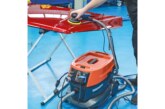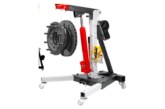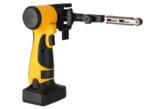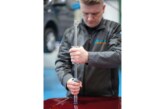Due to the range of temperatures and conditions with which they have to operate through, CV tyres have a very demanding job. We expect these components to perform perfectly throughout their life span, and given the correct levels of maintenance, this is a reasonable expectation. Maintenance isn’t all about a tyre in use. Storage during its working life, including before fitment, has to be considered, along with the age of the tyre.
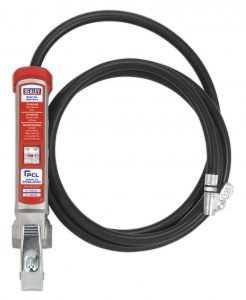
A recent court case highlighted what can happen when tyre monitoring/maintenance falls below recommended guidelines. In 2013 a tyre fitted to the front, nearside wheel of a coach failed, the resulting failure caused a crash which claimed the life of the coach driver along with two young adult passengers. With 40% of its tread still remaining, and no external visible issues, the tyre was deemed fit for use by the coach operator. Investigations carried out after the crash found this tyre was 19 years old when it failed.
Since 2000 all tyres have to have a four digit manufacturing code moulded into their sidewall, the first two digits denote the week the tyre was made, the second two digits the year it was made.
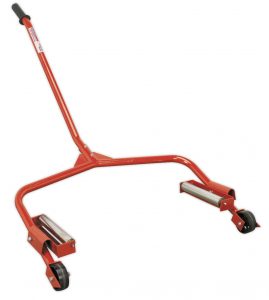
The Department for Transport strongly recommends that tyres over 10 years old should not be fitted to front axles due to the significant forces created through the tyre by steering and braking. The ten year rule is accepted by the transport industry as a reasonable guideline but there is no legislation to govern this accepted rule.
The European Tyre and Rim Technical Operation updated its recommendations in September 2017. One of these updates concerned tyre ageing.
There may be tighter legislation being spoken about for the future, whether or not this comes into place doesn’t take away the responsibility placed on fleet operators, owners and drivers to ensure their tyres and their vehicles are safe to be driven on the public highway.
For a tyre that is in service on a commercial road vehicle, regular checks are a part of its life. However it can be difficult to carry out a visual check to the entirety of a tyre, particularly on twin wheel 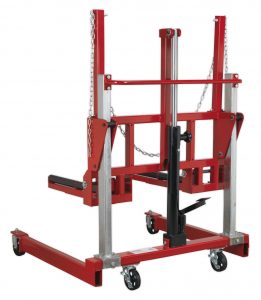 applications.
applications.
When it comes to wheel removal on large vehicles, care must be taken, not only to prevent damage to wheel stud threads and wheels, but also due to the weight of the item being moved. Sealey offer a choice of equipment made specifically for this purpose. With a 127kg capacity, the Sealey TH002 Wheel and Tyre Handling Dolly is a popular choice. For larger vehicles the W508T Wheel Removal Trolley has an impressive 500kg capacity and is hydraulically operated.

